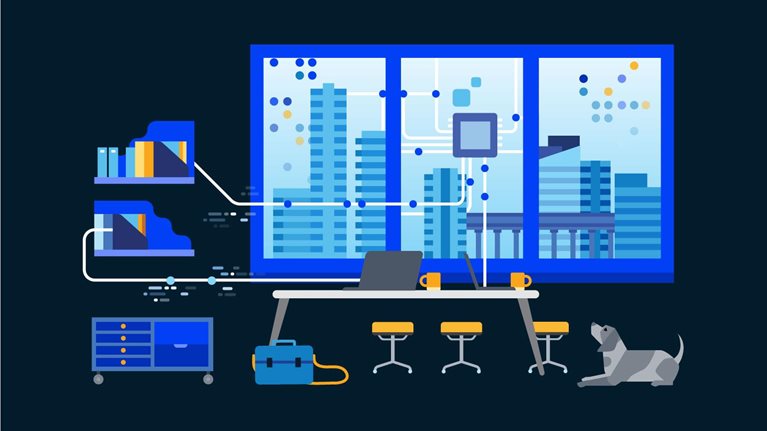How do you create a superior customer experience while also improving cost efficiency, productivity, and employee experience? The tension between service and cost is a perennial challenge for organizations, and it becomes particularly acute during periods of economic uncertainty.
Many companies are finding themselves in such a period right now. But today’s business leaders have advantages that their predecessors did not. The rapid evolution of AI technologies has redefined operational excellence in many sectors, allowing companies to streamline and automate more activities, while giving customers the responsive, personalized service that they want.
Applying the best of today’s technologies in a large, complex business isn’t easy. When processes span hundreds of value streams, thousands of employees, and millions of tasks, how do organizations decide where to focus their resources?
Traditionally, the search for operational improvement opportunities has been intrusive for employees, and time and resource intensive for companies. They spend days or weeks mapping the flows of information through their organization and tracking the ways people spend their time, to pinpoint the major sources of delays, errors, or variability. Ultimately, they’re trying to answer the straightforward but multilayered question “What are team members spending their time on?” The success of such work can depend on luck: Because improvement teams can only analyze a small sample of work, their findings may not be representative of the actual situation across the business.
AI-accelerated insights
AI can help companies do better—impact to operations is estimated to be as high as $10 trillion to $15 trillion. In modern organizations, work leaves a detailed digital footprint feeding large datasets that have traditionally not been looked at outside of troubleshooting. These are typically transaction logs of enterprise resource planning (ERP) systems, the communication records of team members, or the activity logs of individual workstations. Companies can now apply AI to those datasets to build a detailed picture of process flows, task efficiency, and employee performance.
These new AI tools come in two different flavors, designed to help companies identify distinct types of performance improvement opportunity.
- Process mining tools extract transaction-level insights from ERP systems. They are designed to give teams an end-to-end view of a particular process, helping them understand how the process flows and the different deviations and exceptions that occur. It also provides clarification on who owns the various process steps and how effectively those steps are completed.
- Task mining tools offer deep perspective on the activities and workloads of teams and individuals. Data are collected from the front line, looking at which applications team members use most and the actions they take to get a task done.
Both approaches are powerful, each with a strong record of delivering valuable insights in real-world applications. One advanced industry high-tech manufacturer applied process mining to its order-to-cash process. It identified initiatives with the potential to reduce end-to-end activity time by 20 percent to 50 percent, improve customer satisfaction by 12 to 15 percentage points, and increase efficiency by 10 percent to 15 percent.
A company in the aerospace and defense sector used task mining to analyze the activities involved in a business-critical process. Task mining revealed that employees spent more than half their time working with spreadsheets, and two-thirds of that time conducting analyses. As teams frequently repeated similar analyses, the finding helped the company devise a productivity improvement plan that focused on automation of common tasks, together with improved process governance to ensure employees used the most efficient tools for every job. Those initiatives were expected to reduce end-to-end process times by more than 40 percent.
Would you like to learn more about our Operations Practice?
Is it actionable?
Process mining and task mining both reveal aspects of operational performance that would be hard to identify in any other way. The challenge comes in translating these insights into actionable improvements. One large international retailer, for example, conducted an extensive process mining exercise that identified $200 million to $500 million of potential savings across its operations. When it tried to capture those savings, however, its improvement teams were only able to identify initiatives sufficient to achieve around a quarter of the savings identified.
The company struggled because it had only a partial picture of the challenges faced by its employees. The process mining tool revealed opportunities to make processes run more efficiently but missed multiple sources of delay and rework driven by actions that happened outside the ERP system. Ad hoc processes such as change requests submitted via email or phone, spreadsheet manipulation to clean or format data before input into ERPs, and decisions that were delayed because key employees were busy with other tasks were not captured by process mining.
Better together
One way to overcome the individual limitations of process mining and task mining is to apply them together. Combining the two tools in a thoughtful, targeted manner gives improvement teams a 360-degree view of their operations, helping them design interventions that lead to substantial and sustainable performance improvements.
Process and task mining tools can be combined in different ways. Some organizations apply process mining first, to map current processes and identify the high-level pain points in their operations, pinpointing key inefficiencies and “breakdown” points. Then they apply task mining in those areas, to create a granular view of where employees are spending their time, which tools they are using, and how activities differ across business units, teams, and individuals.
Alternatively, some companies start with task mining, to gain an understanding of the tasks that absorb the largest share of employee time. They then apply process mining to create a more granular view of the specific activities that drive delays, mistakes, and inefficiencies in those tasks.
A global distributor of industrial products used the latter approach to improve its customer support model after a major acquisition. With more than 100,000 customers and thousands of suppliers, the analysis had to be comprehensive and large scale, but the company also wanted a transaction-level view of the work done by its sales teams for actionable insights.
It began by applying task mining to analyze the activities of around 100 sales employees across the business. That work showed that salespeople spent approximately one-third of their computer time on order entry activities, with more than half of that time used to double-check and correct basic information such as pricing and availability.
To understand the root causes of all that rework, the company then used process mining to analyze 1.5 million transactions across the three major systems that operated its quote-to-cash process. Process mining showed that 65 percent of orders required manual updates by sales employees, even though many of those orders were routine stock-and-flow transactions with regular customers. Downstream, manual interventions were also required on up to one-third of invoices.
This two-pronged analysis enabled the company to implement a suite of measures to transform efficiency in its order-to-cash process. By increasing automation and adjusting processes it dramatically reduced the need for manual intervention in order and invoice creation. In addition, it implemented coaching for teams on the best way to use the tools available to them. These changes unlocked $30 million in efficiency savings, freeing up significant sales employee time to focus on the company’s growth goals.
The process mining initiative also revealed several hidden sources of value loss. Reducing lost sales due to write-offs and invalid customer credit information boosted revenues by $18 million. Stronger discipline around payment terms delivered a $5 million reduction in working capital requirements. Most importantly, process improvements helped the distributor address a key pain point for customers, increasing on-time, in-full shipments by 10 percent to 15 percent.
Process mining and task mining tools are bringing the power of AI to business operations. These new approaches, which use data companies already have, are faster to implement, less intrusive, and a more representative way to generate insights into operational performance. Used together, process and task mining can provide an unprecedented 360-degree view of complex processes in large organizations. They are especially applicable when processes are highly manual, deviations are common, or there’s a lack of visibility.
While AI solutions provide substantial acceleration and scale when it comes to discovering opportunities to unlock value, AI is not a panacea for operational excellence. Even the most advanced tools still require expert human input to put results into context, and to understand the implications of analyses. Translating insights into process improvements requires further expertise to design appropriate interventions, deploy new processes and technical solutions, and manage change across the organization.


